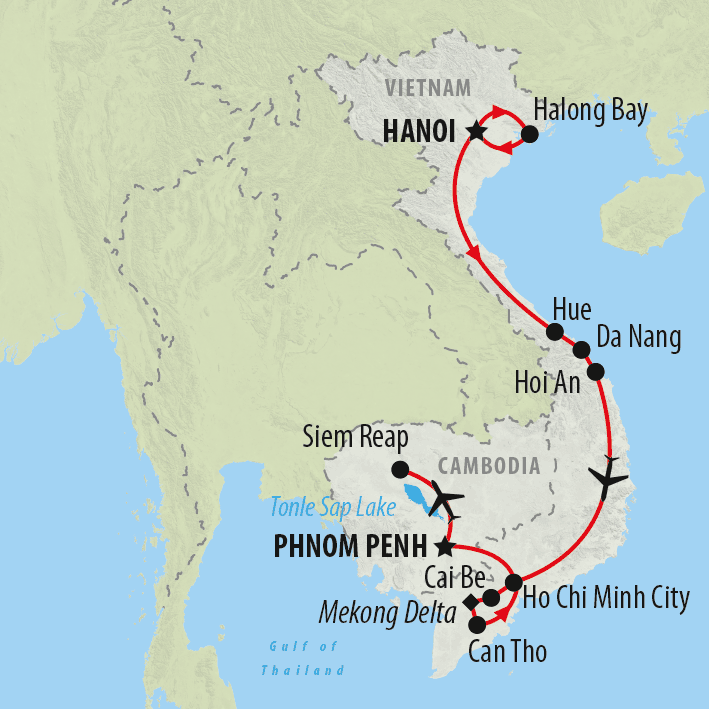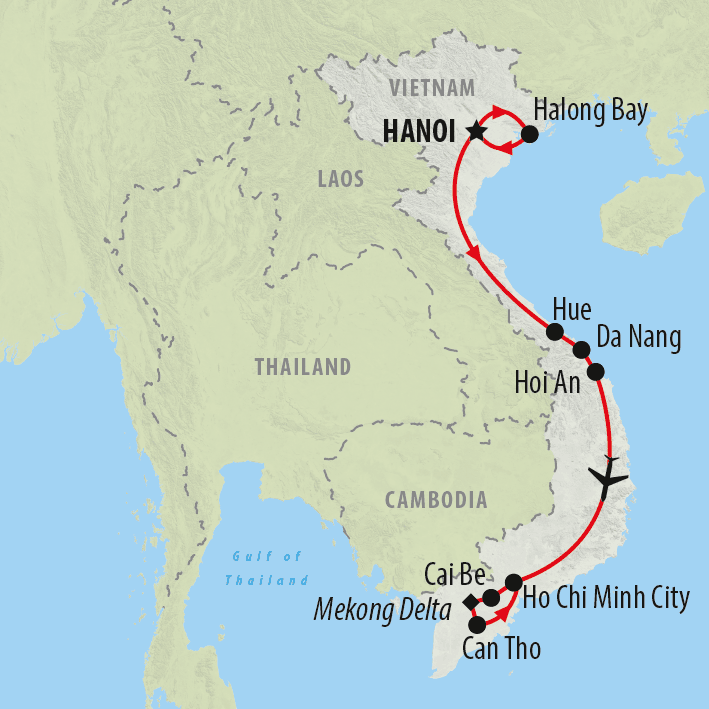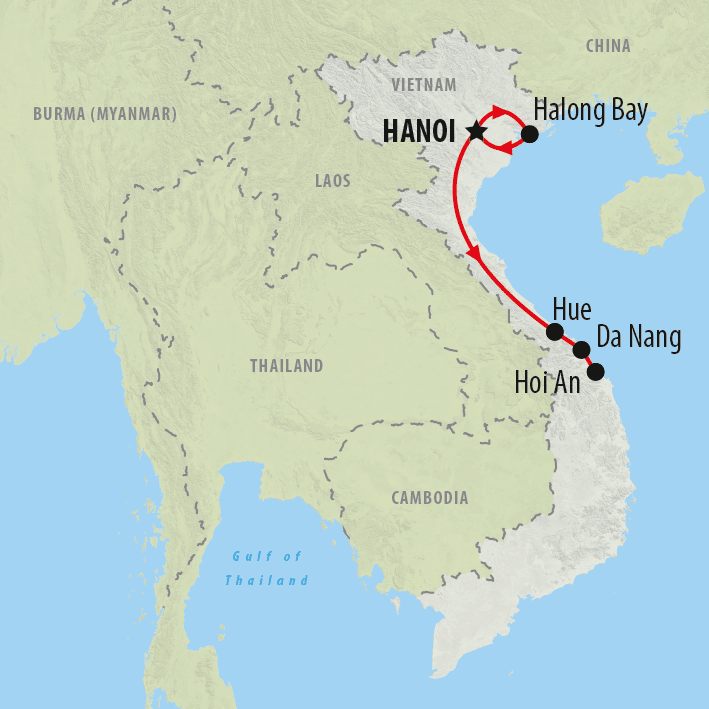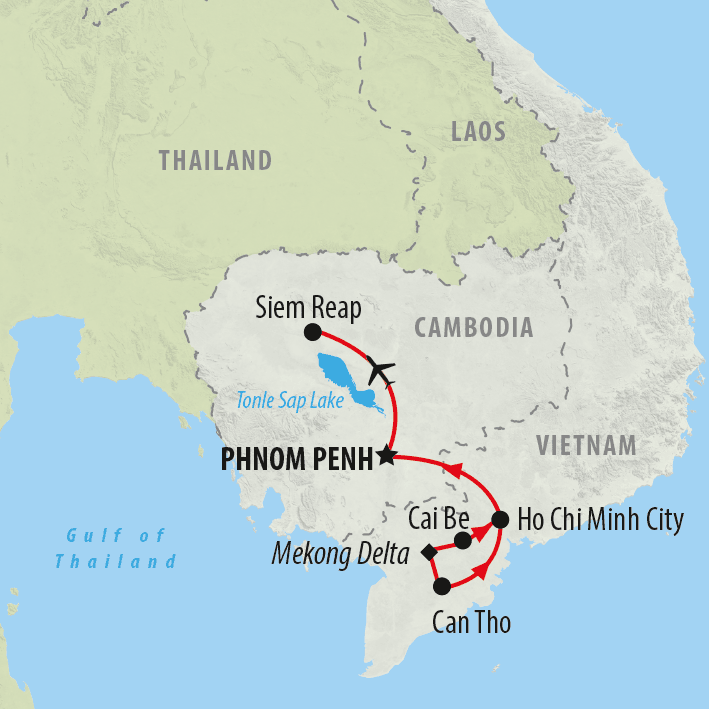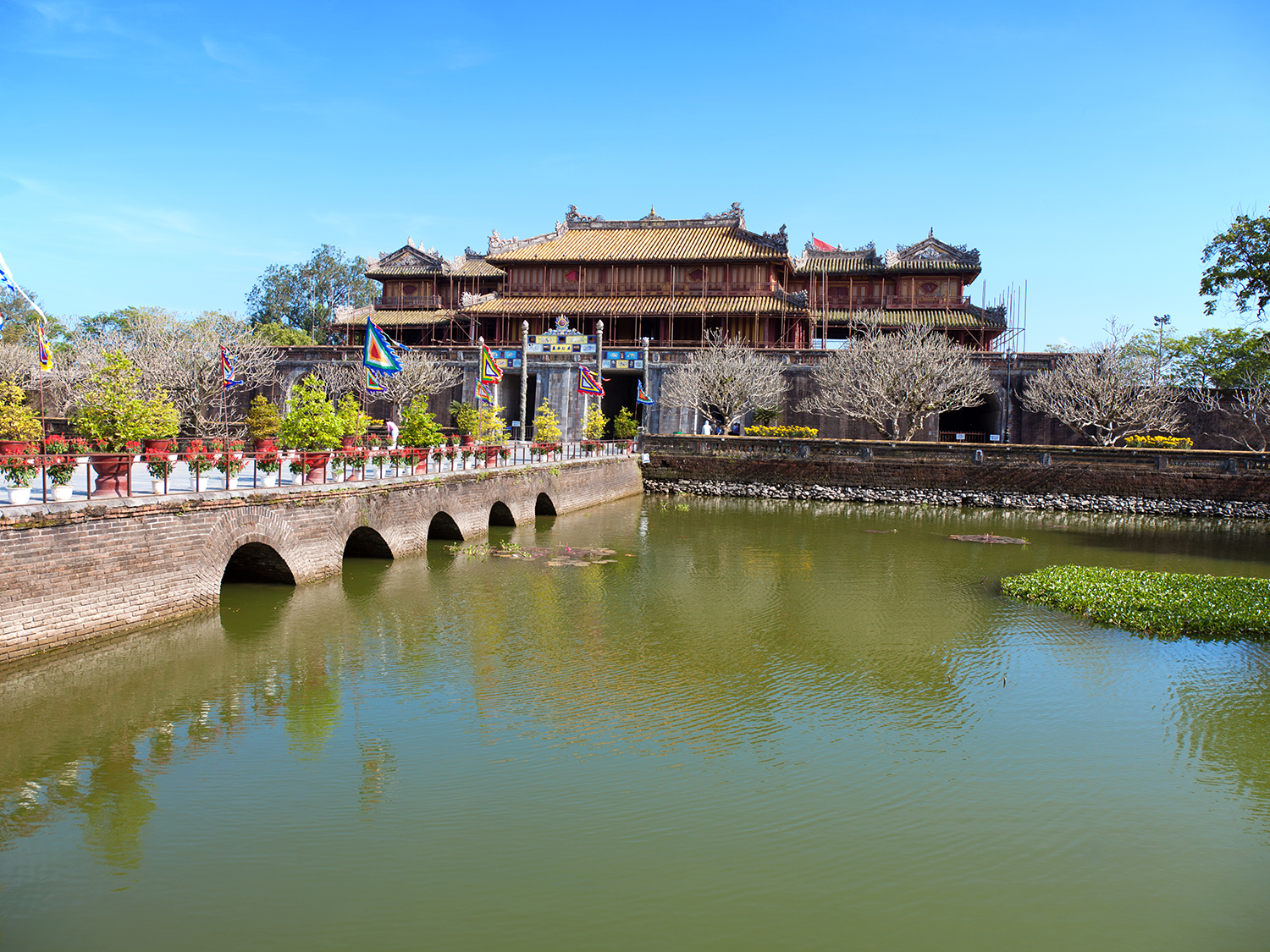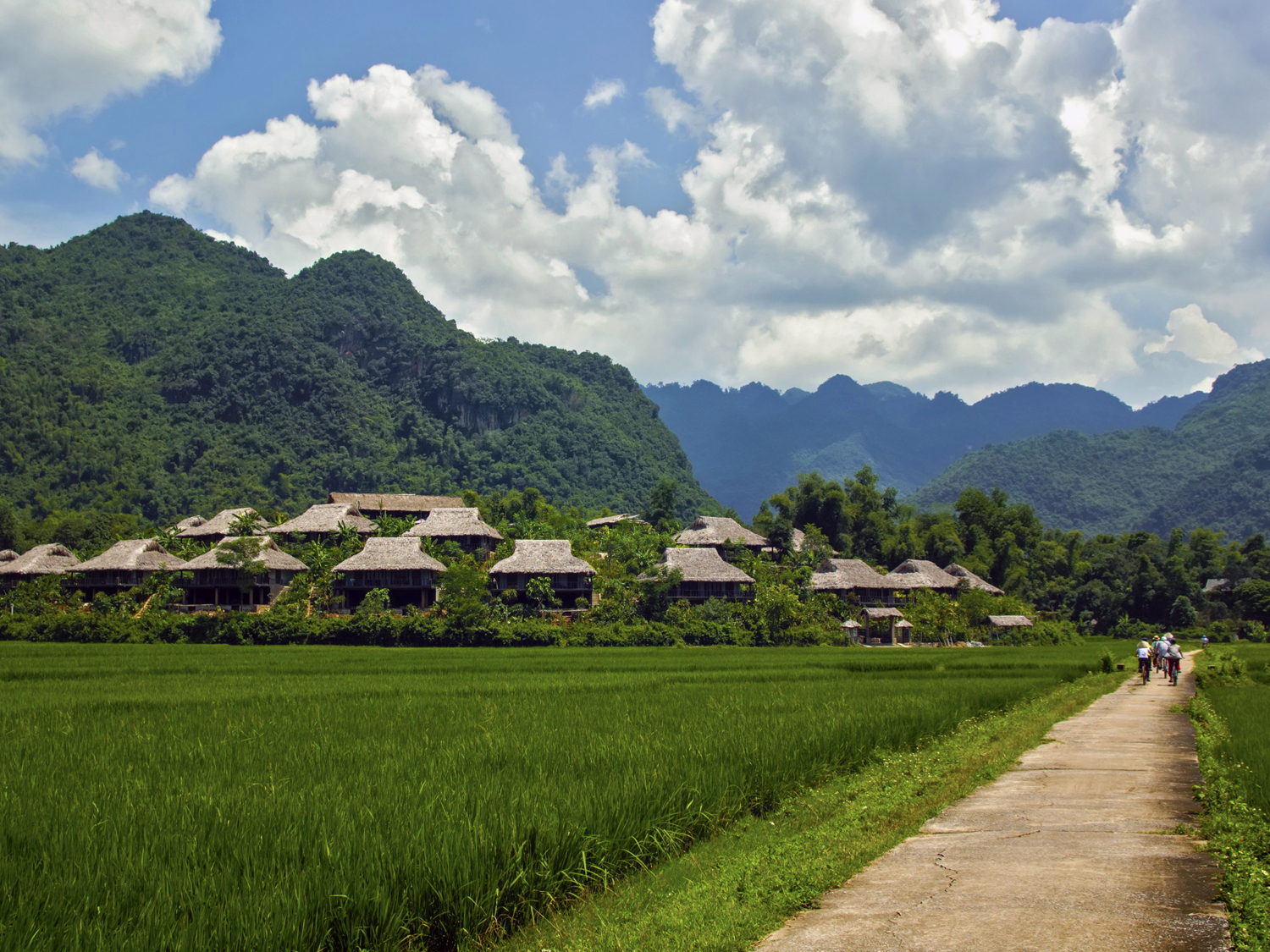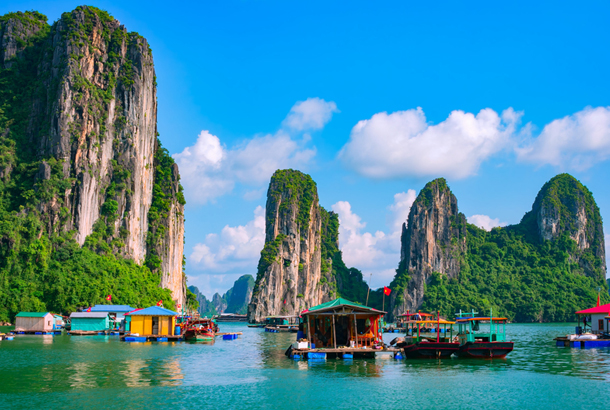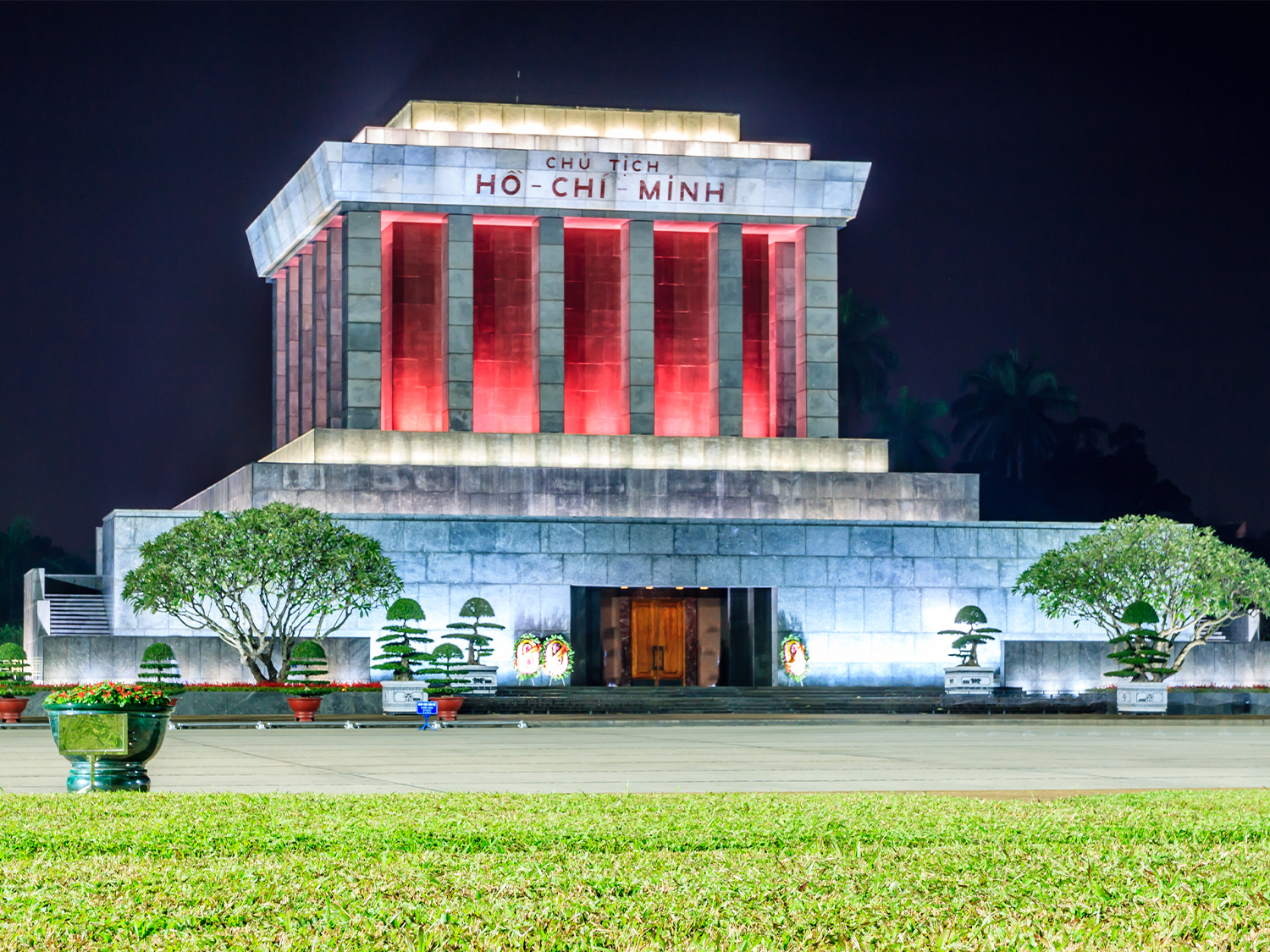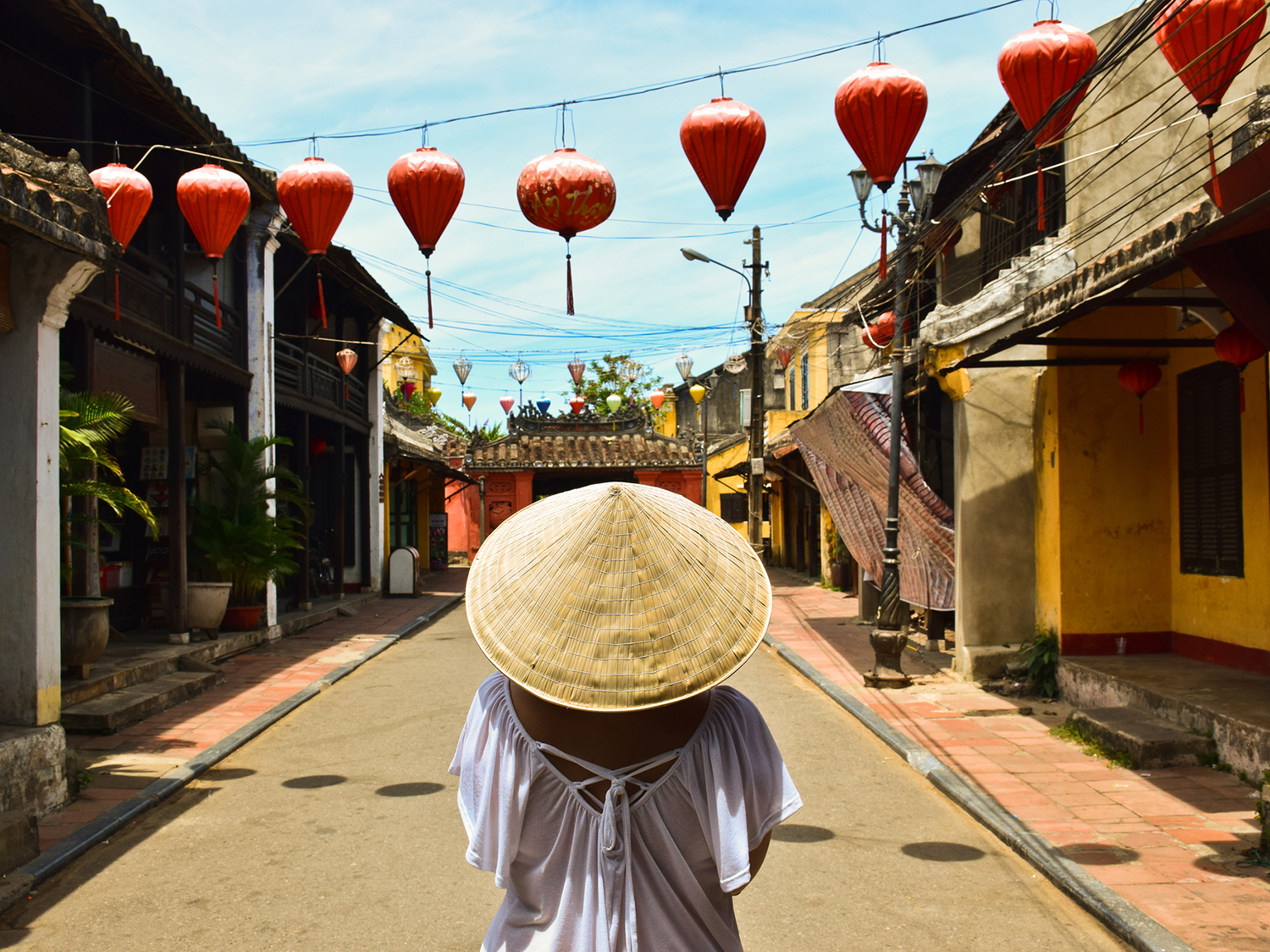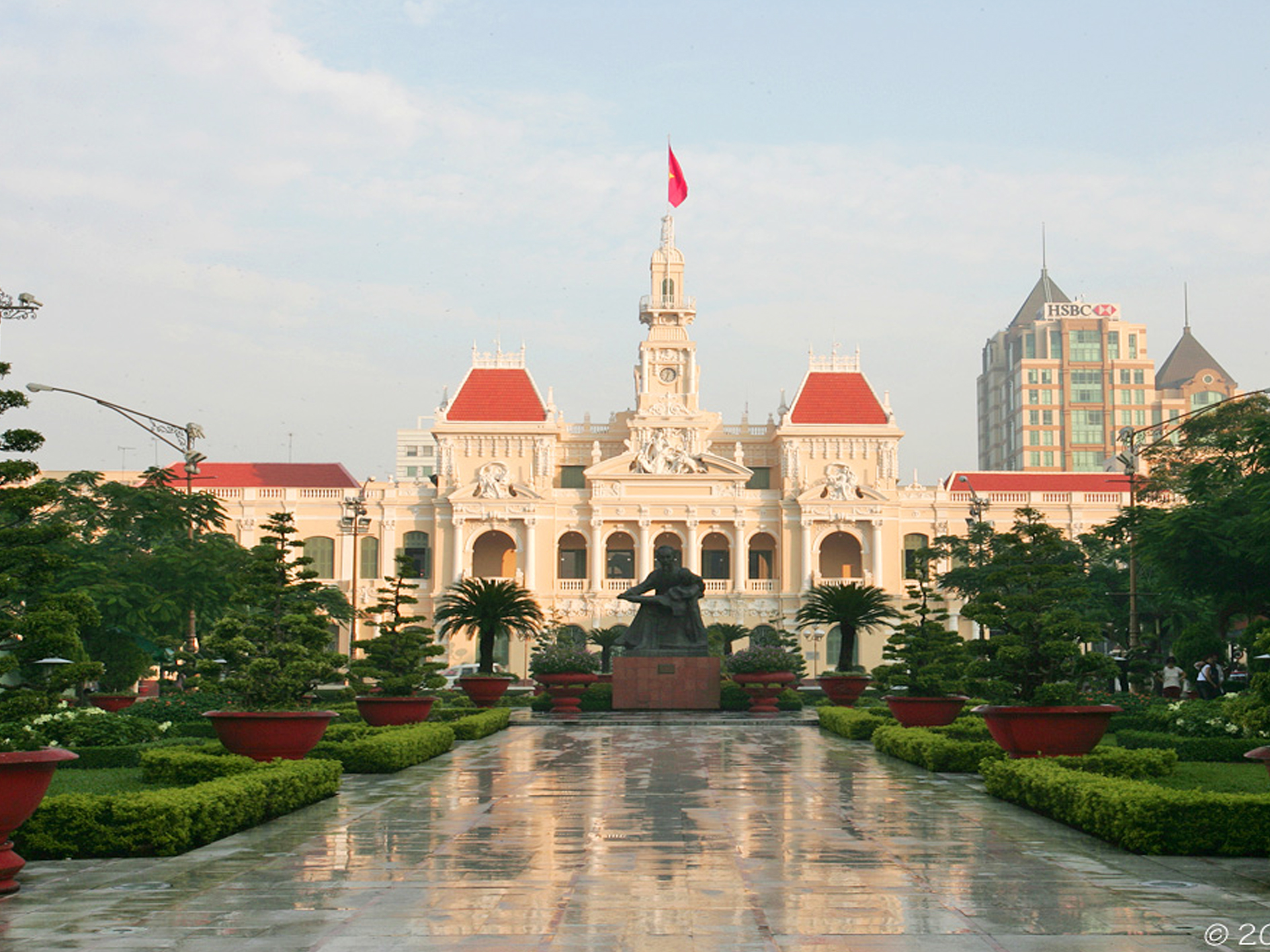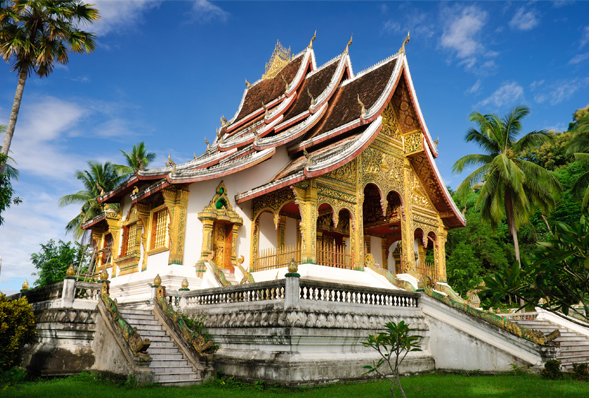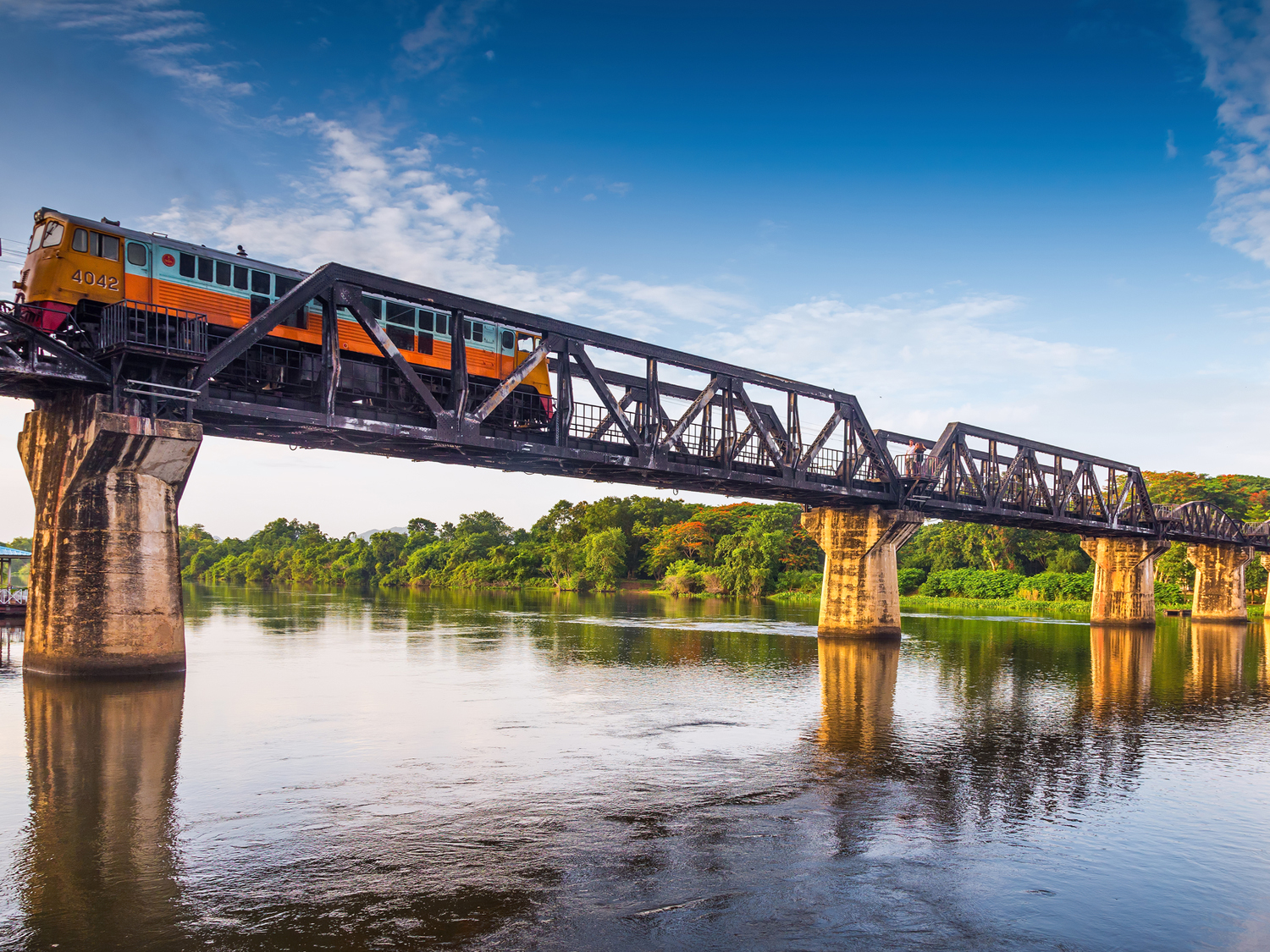Weather-Proof Packing Tips for Your Vietnam TourPack Smart for Your Vietnam Tours: Essentials for All Weather Conditions
When do you want to go?
2024
I'm flexible
Passengers
Adults (18+)
Children (0 - 17)
Welcome to Vietnam
Are you planning a trip to Vietnam in the future? Confused about what you need to pack or the type of weather that you might experience? Let us help!
Packing is one of the most important things you’ll need to do before going on holiday. Well, that and booking your trip. In this guide, we’ll go into detail on the different types of weather that you can expect in each month and region of Vietnam. As well as describing the best pieces of clothing, accessories, and items to add to your suitcase, to make your trip as smooth as possible.
The Weather of Vietnam
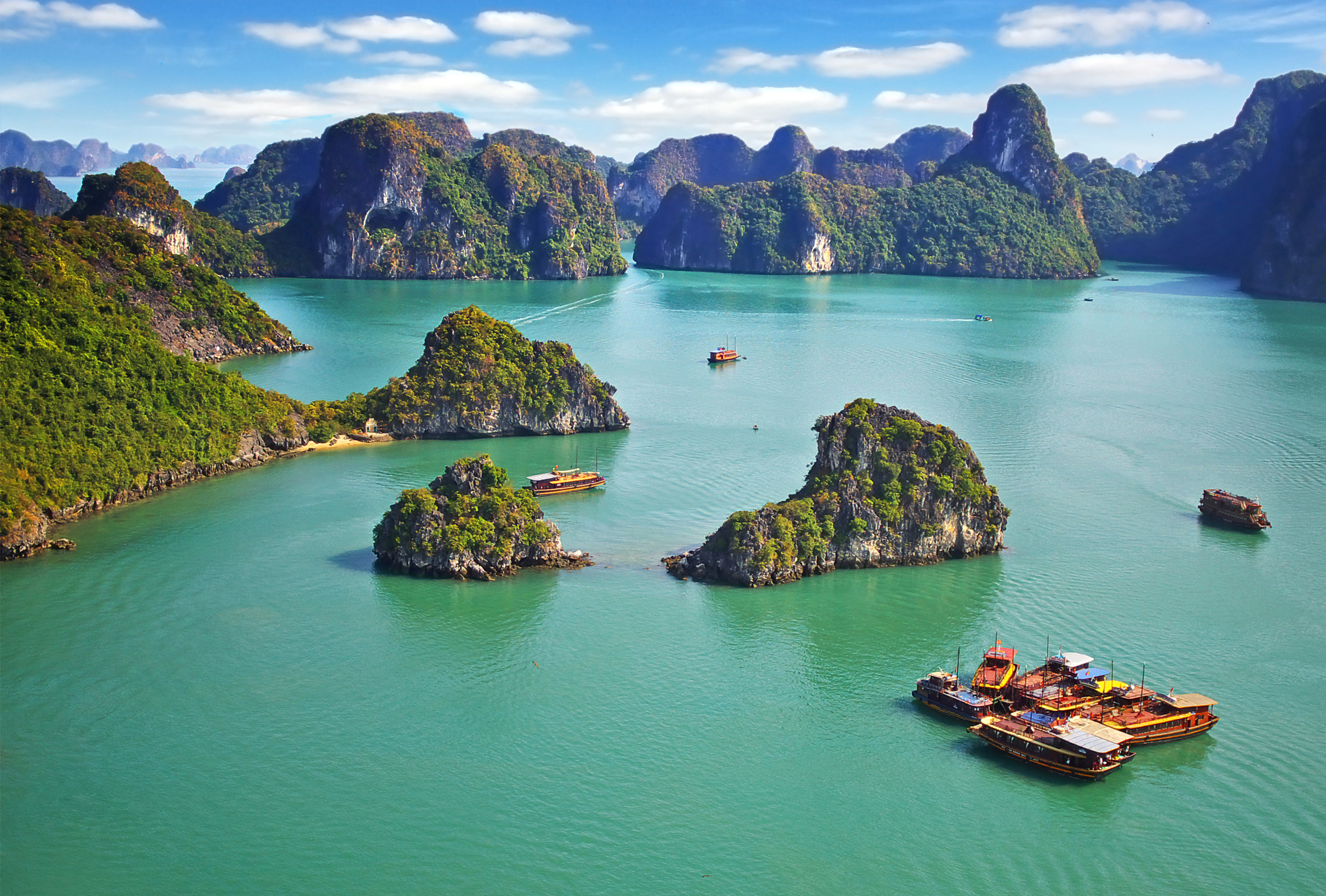
Vietnam's distinct topography results in a variety of varied weather patterns, with both tropical and temperate zones being there. Traveling to Vietnam may provide a variety of novel experiences, ranging from the Mekong Delta's floating marketplaces and the capital city of Hanoi in the north to Ho Chi Minh City in the south. It is advisable to be prepared because the weather in any one place might change depending on the day.
Seasonal Weather in Vietnam
The weather, the number of other guests, the kinds of excursions, and your trip can all be impacted by the season you select. It may surprise you to learn that the weather in Vietnam varies according to the day, the month, and even the season.
Winter in Vietnam
In Northern Vietnam, winter lasts from December until the beginning of February. Even though it is drier than other seasons in the area, drizzles are nevertheless possible on occasion. In contrast to the warmer southern part, the northern portion has colder temperatures, ranging from 14 to 20 °C. It can even get as low as 0 °C in hilly regions like Sapa, Ha Giang, and Lang Son. When visiting these locations in the winter, you get the opportunity to take in the captivatingly beautiful snowy landscape.
Autumn in Vietnam
Autumn in Vietnam is a brief season, lasting just from September to November. The pleasant weather, with a hint of cold, is complemented by calm winds and plenty of sunshine, creating a distinct autumn atmosphere in Hanoi and Northern Vietnam. To appreciate the beauty of this season, take a leisurely stroll or enjoy a cup of coffee in Hanoi. For individuals who prefer hiking and other outdoor activities, October and November are good months to visit Sapa, Ha Giang, Mai Chau, Moc Chau, and other northern destinations. These months provide ideal weather conditions for outdoor pursuits, as well as a stunning backdrop of golden rice paddies during harvest season.
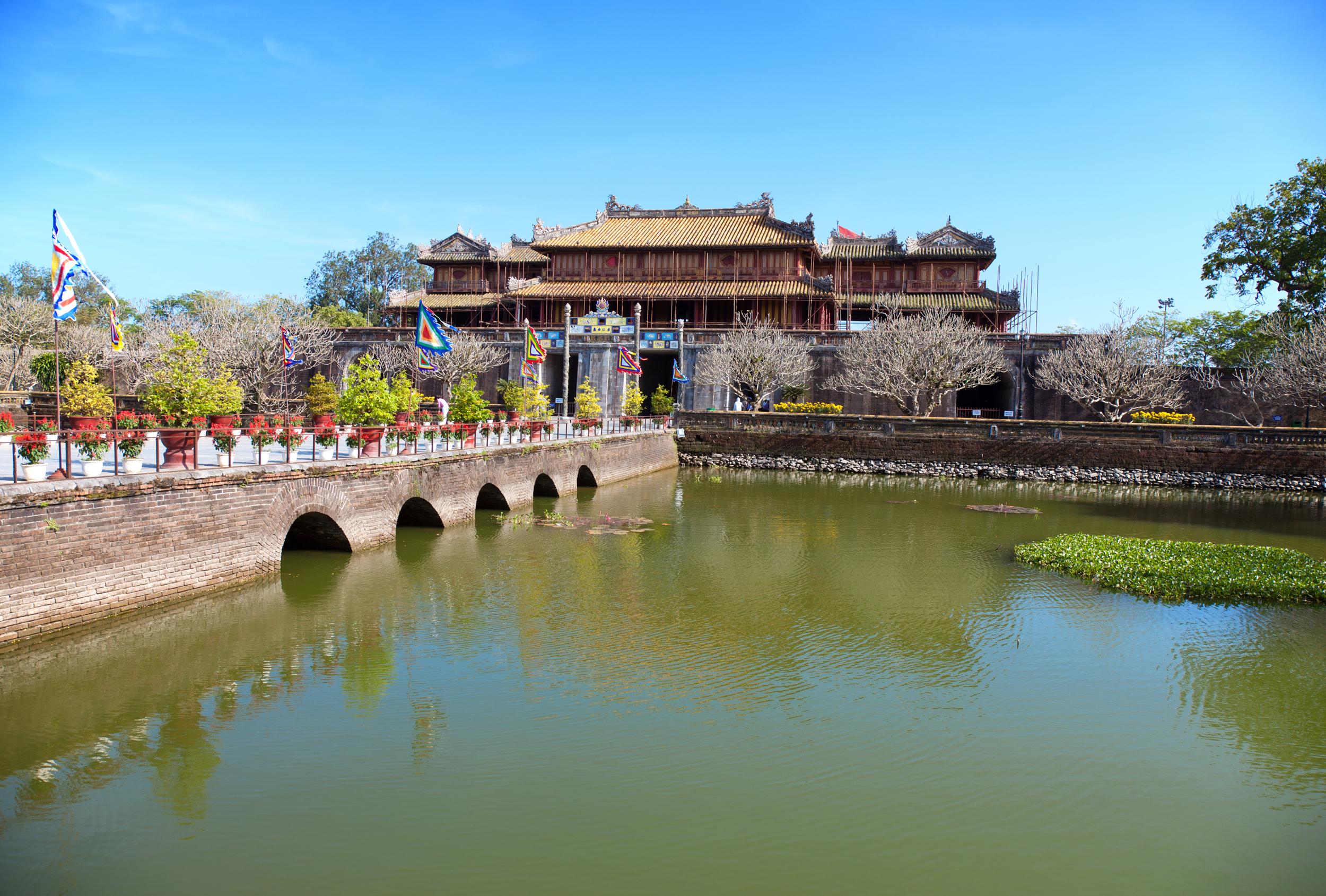
Summer in Vietnam
Northern Vietnam's summer season, which runs from late April to late August, can be hot and humid. The heat may be extreme, with average temperatures reaching 34°C (93.2°F) and occasionally exceeding 40°C. Because of this, many individuals avoid stepping outside between 10 am and 3pm This will be the warmest period of the day. If you want to visit Vietnam during this period, you should take precautions such as applying and reapplying sunscreen, wearing a hat for shade, and staying hydrated.
It is crucial to remember, however, that the weather can be unpredictable during this time. Heavy downpours and thunderstorms are common, especially in the afternoon. So, while you are visiting, be prepared for rapid changes in the weather and bring proper rain gear.
Despite the oppressive heat, summer is also the busiest season for domestic travel in Vietnam. Popular beaches in Nha Trang and Da Nang, as well as other popular places including Vietnam Hue and Hoi An, may become overcrowded during this period. If you intend to visit these locations, you should be prepared for heavier crowds and plan ahead of time to make the most of your stay.
Spring in Vietnam
Spring in Northern Vietnam is a fleeting season that spans from February to early April. The skies are a brilliant blue, the sun shines brightly, and gentle breezes sweep across the entire country.
Springtime in Vietnam is not only marked by the changing weather but also by a myriad of cultural festivals. During the season, the highlight is the Tet holiday and also the Vietnamese Lunar New Year, which is the longest and, arguably, the most important celebration in the country.
Dry and Rainy Season
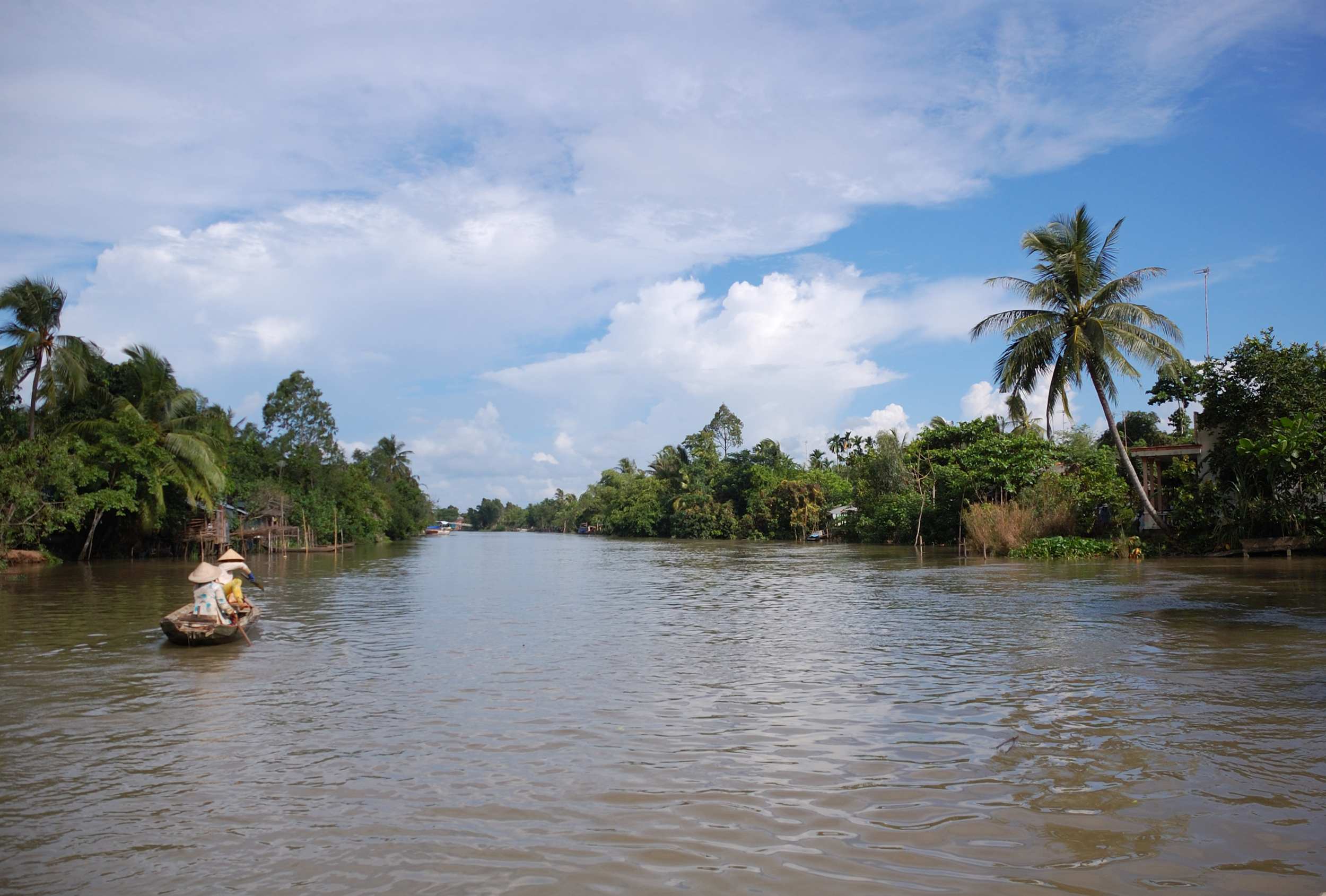
In the central and southern areas, the seasons in Vietnam are divided into two main categories: the dry season and the rainy season.
The Dry Season in Vietnam
From mid-January to early August, temperatures in Hoi An, Hue, and Da Nang in Central Vietnam are hot and dry, with highs of about 30 °C. Quy Nhon, about a six-hour drive south of Hoi An, experiences similar weather patterns. Although its dry season is slightly longer due to its proximity to the southern region,.
Moving further down to the southern part of Central Vietnam, Nha Trang enjoys an extended dry season, typically from January to September, characterised by high temperatures and minimal rainfall.
In southern Vietnam, the dry season starts in November and lasts until April or early May, with the period from late February to May being slightly sweltering and more humid. The average temperature in the south remains between 25°C and 35°C year-round.
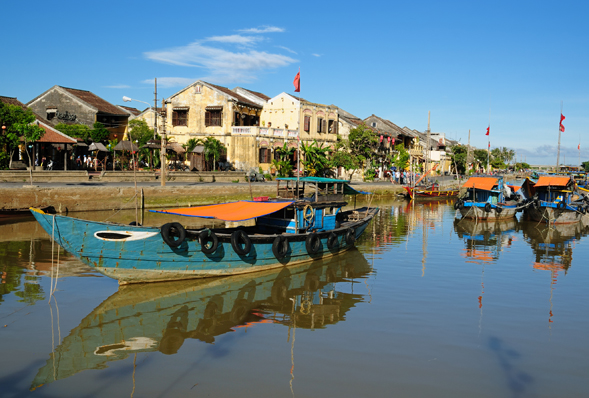
The Rainy Season in Vietnam
The rainy season in Vietnam varies in the central and southern regions. The central coast of Vietnam is frequently hit by typhoons during its rainy season, which usually occurs from August to November. However, predicting the timing of heavy rains and hurricane-like winds in coastal cities like Hoi An can be challenging. The rainy season typically tapers off in February, when warmer temperatures and more sunshine can be expected.
On the other hand, the rainy season in Southern Vietnam spans from June to November, although the rain often comes in short bursts and rarely disrupts travel plans. In fact, the monsoon season can be an ideal time for photography, with sights of green rice paddies and colourful fruit orchards in the Mekong Delta region. However, some travellers may find the temperature unbearable from March to May, as it can soar to 35°C to 40°C.
Travelling to Vietnam
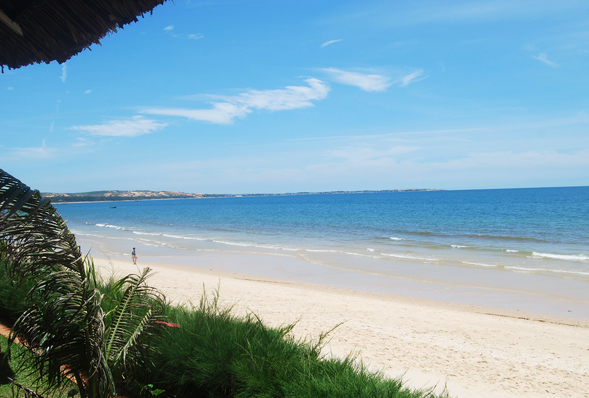
Whether it is your first time travelling to Vietnam or you are a seasoned adventurer returning to Vietnam, deciding what you need to bring is always going to be a stressful decision. If you are staying for a few days, taking our Hanoi & Halong Bay tour, or travelling across Indochina for 21 days, knowing what to bring with you is important.
Regional Specific
Your experience of Vietnam can differ depending on which part to choose to explore. We have tours that allow you to explore the north of Vietnam, visiting incredible places such as Hanoi and Halong Bay. We also have tours that take you to Central Vietnam and South Vietnam, visiting Ho Chi Minh and the Mekong Delta.
Vietnam in January
The winter weather is turning the northern hemisphere into a winter wonderland. In Vietnam, January is the start of the dry season, making it a fantastic time to visit the country. The dry season is a regular period of prolonged dry weather. It also means that there is very little rain, especially in the tropics. Northern destinations like Hanoi and Halong Bay boast cool, refreshing temperatures, making it an ideal time for trekking through picturesque landscapes. Central Vietnam, including Hue and Hoi An, enjoys milder conditions, which are perfect for exploring ancient towns and the pristine beaches.
Southern areas like Ho Chi Minh City and the Mekong Delta experience lower humidity and less rainfall, making city tours and river cruises more enjoyable.
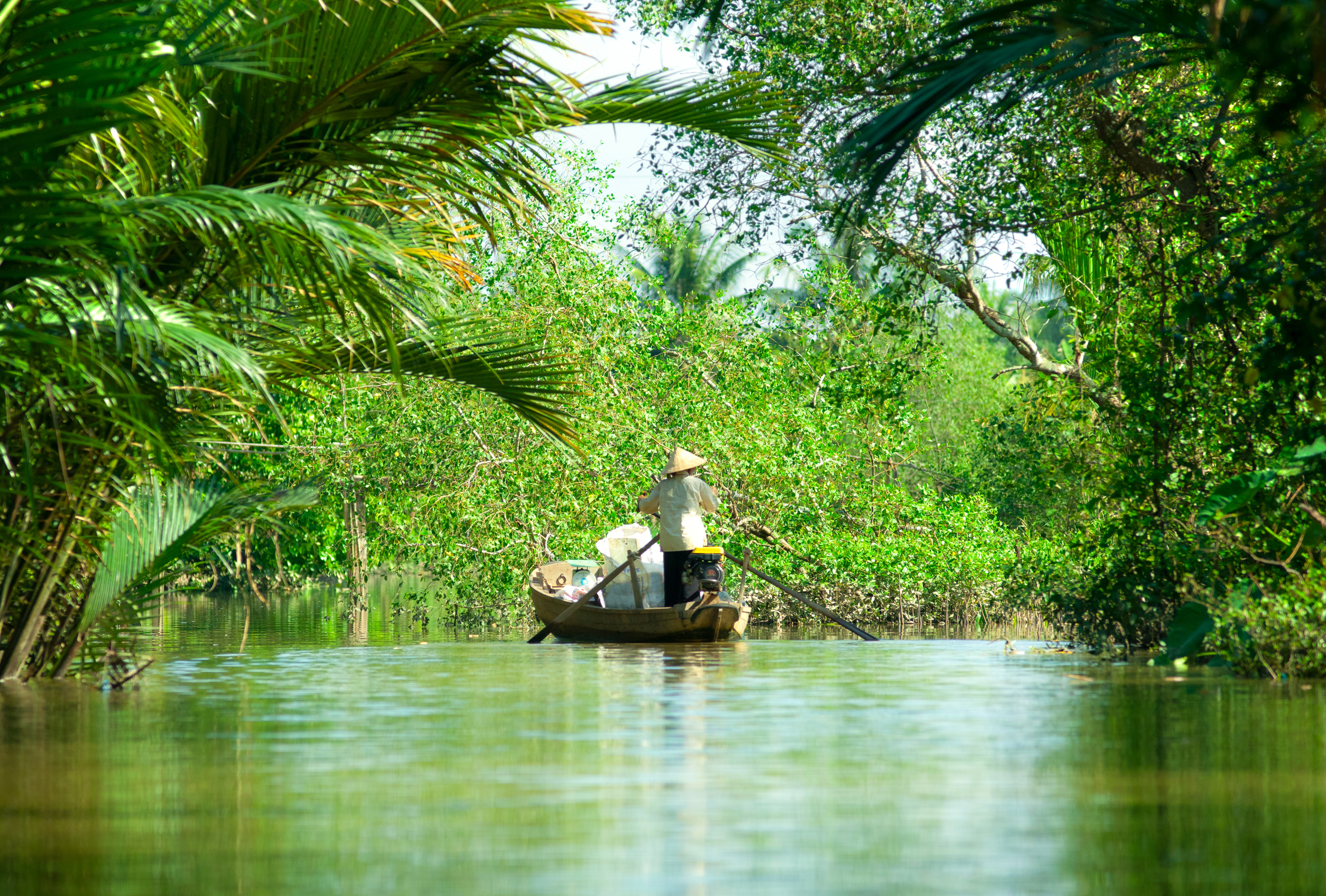
Vietnam in February
February is the middle of the dry season in Vietnam; it is the sweet spot for weather. The worst of the winter is over in the north of the country, with milder temperatures and light rain, while the south bakes in 30°C heat during the dry season. The consistent range of temperatures, from 10°C to 20°C, makes it comfortable for outdoor activities. With temperatures between 20°C and 26°C, the central region is still pleasant and dry, which attracts tourists. The southern region experiences a prolonged dry season with pleasant temperatures ranging from 23°C to 33°C, making it an ideal time for beachgoers and those wishing to explore the vibrant streets and markets.
Vietnam in March
Northern Vietnam warms up in March as spring approaches, with highs of 15°C to 25°C. The weather is still dry, so now is a great time to go. The middle region, with temperatures between 22°C and 28°C, is comfortably warm and perfect for beach activities. In the south, temperatures range from 25 to 35 degrees Celsius throughout the dry season, while the heat wave persists. Even so, now is a fantastic time to go before the rainy season starts.
Vietnam in April
In April, the temperature in northern Vietnam rises to 28°C from 18°C. It is a terrific time of year for travel and outdoor activities because of the dry and nice weather. Temperatures in the central region range from 24 to 32 degrees Celsius, and there is a chance of rain showers at times. In the south, hot, dry weather with temperatures between 26 and 36 degrees Celsius signals the end of the dry season and is perfect for water sports and sunbathing.
Vietnam in May
In May, there is a notable shift in the weather, with temperatures in the north reaching between 22°C and 32°C and being hotter and more humid. The central region has mild temperatures, ranging from 26°C to 34°C, as the rainy season begins. The rainy season, which brings high humidity and temperatures between 26°C and 36°C, officially begins in the south. Travel is still feasible despite the rain because the showers are usually short.
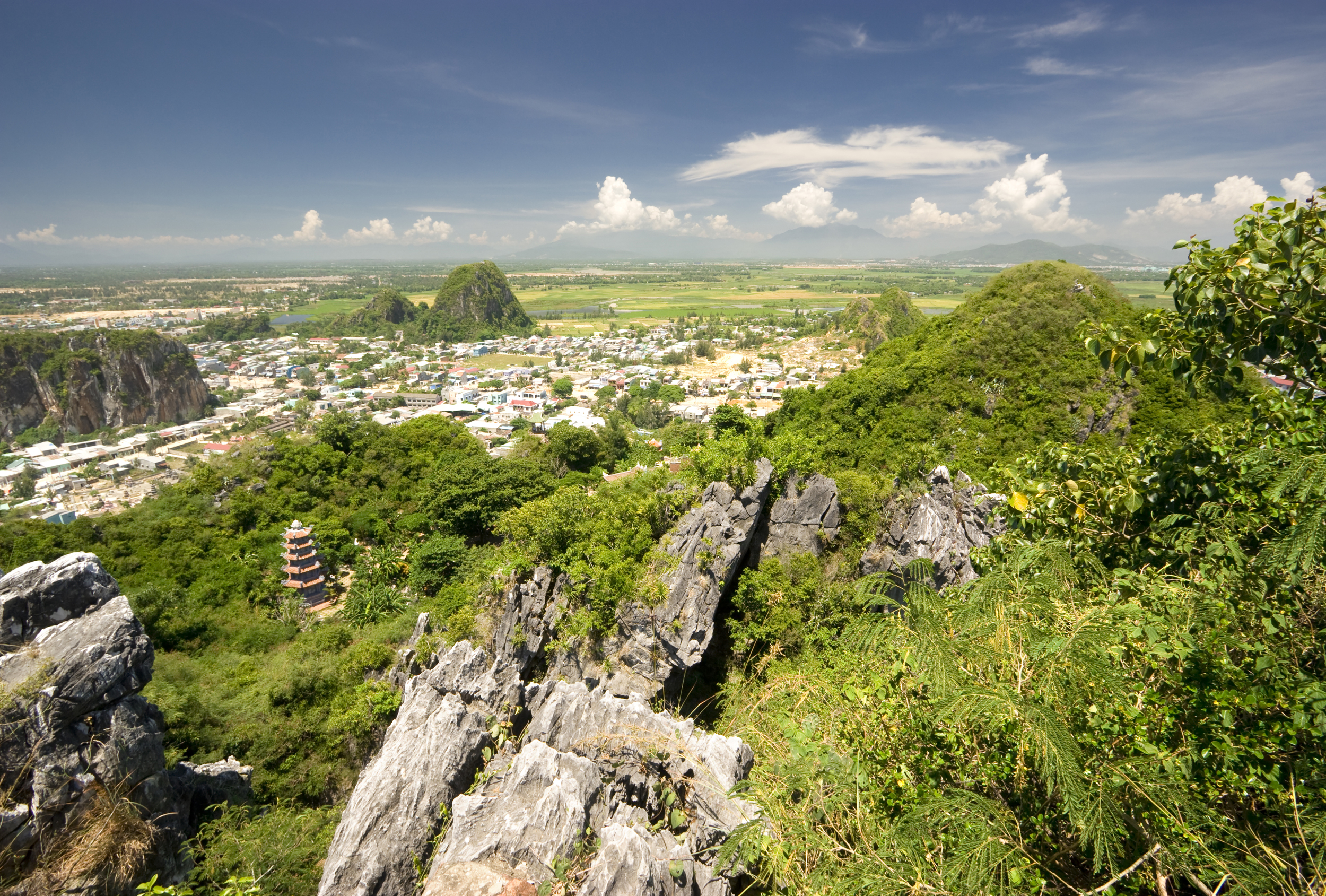
Vietnam in June
June marks the start of the rainy season in northern Vietnam, which is hot and muggy. 24-34 °C is the typical temperature range, and afternoon rains are common. The central region is hot, with temperatures ranging from 26 to 35 degrees Celsius and rising showers. The south is currently experiencing its wet season, which is marked by temperatures between 25 and 34 degrees Celsius and heavy, but brief, rainfall. Preparedness is advised for humid weather and sporadic downpours for travelers.
Vietnam in July
The north continues to see hot, muggy weather in July, with highs of 25 to 35 degrees Celsius and frequent downpours. With temperatures between 26°C and 35°C, the central region is still hot and humid. The rainy season, which lasts from 25 to 33 degrees Celsius and brings regular rains to the south, is dominant. If you make the proper arrangements for the weather, traveling can still be pleasurable.
Vietnam in August
In August, there is still a lot of rain and heat in northern Vietnam. The usual temperature range is between 24°C and 34°C. The center region is hot and humid, with temperatures between 25°C and 34°C during the height of the rainy season. The south continues to see heavy humidity, periodic downpours, with temperatures ranging from 24 to 33 degrees Celsius. The vivid festivities and verdant scenery can provide for an unforgettable vacation even in spite of the rain.
Vietnam in September
September is a little cooler than other months, but it is still rainy and the temperature ranges from 22 to 32 degrees Celsius. With frequent downpours and highs of 24 to 33 degrees Celsius, the central region remains warm. Temperatures in the south range from 24 to 33 degrees Celsius as the rain starts to lessen. There may be a mix of sunny and rainy days during this transitional period, which makes it an ideal time to explore the varied landscapes of the nation.
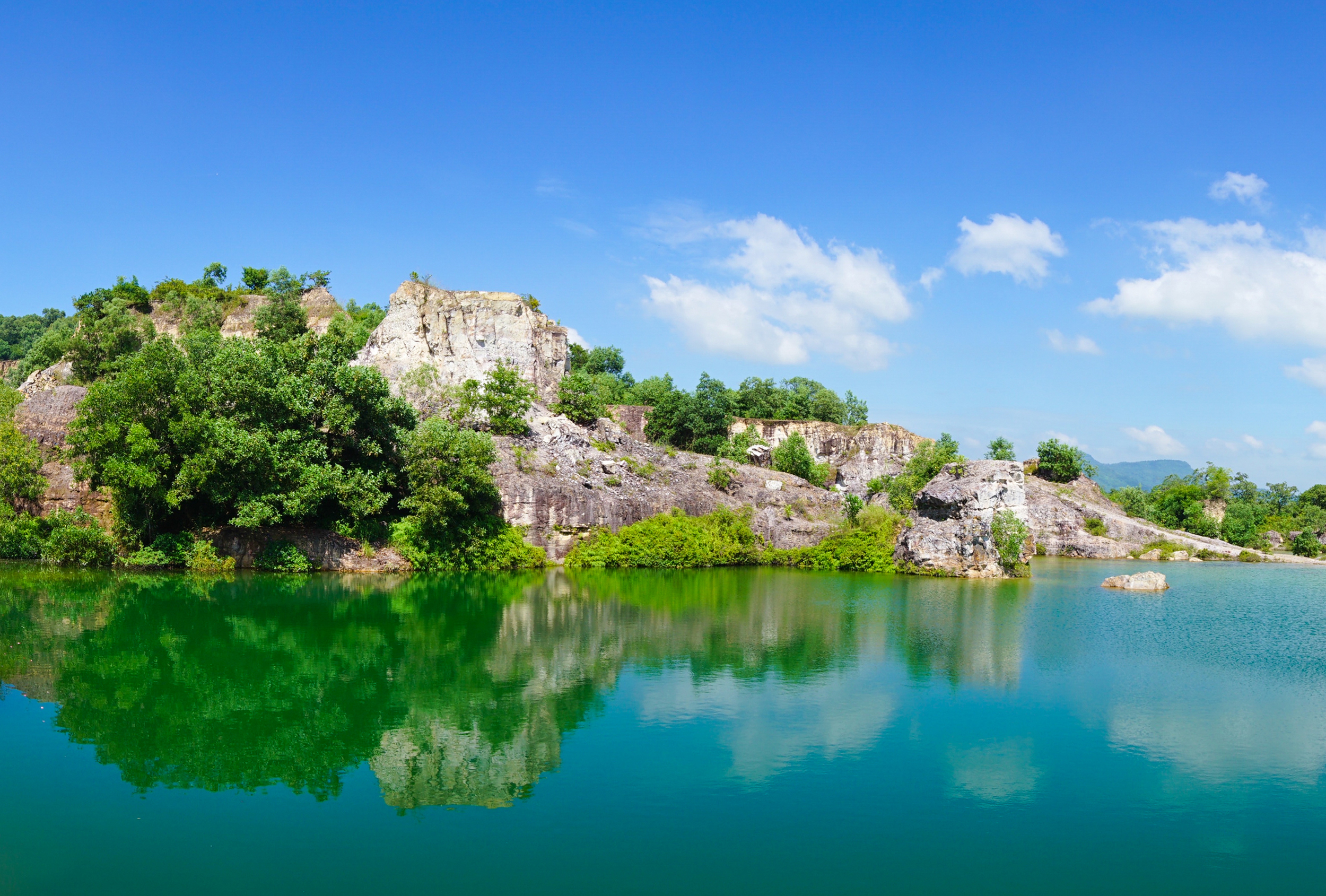
Vietnam in October
One of the best months to visit northern Vietnam is October, when temperatures range from 20 to 30 degrees Celsius and are milder and drier. The central region has temperatures between 23°C and 30°C, with minor cooling but continued precipitation, especially in coastal areas. The south is entering the dry season, which is characterized by lower temperatures (23°C to 32°C) and less precipitation. This is a great time to visit southern Vietnam's beaches and islands.
Vietnam in November
November offers dry, cold weather to the north, with highs of 15 to 25 degrees Celsius. Trekking in the northern mountains and exploring towns like Hanoi are best done during this time of year. Less rain and comfortable temperatures between 22°C and 28°C make the central region ideal for exploring historical monuments and relaxing by the coast. With warm, dry weather and temperatures between 23°C and 32°C, the south experiences the start of the dry season, which is ideal for outdoor activities and beach trips.
Vietnam in December
In December, the weather in northern Vietnam ranges from 10°C to 20°C, and it is dry and cold. The holiday celebrations and touring the area's cultural sites are made possible by the cool weather. The central region continues to be dry and warm, with temperatures ranging from 18 to 24 degrees Celsius, making it a comfortable place to travel. With temperatures ranging from 22°C to 32°C, the south enjoys pleasant, dry weather that is perfect for beach vacations and seeing the exciting southern cities.
Our best Vietnam tour offers
Explore Vietnam for less with these amazing offers
Your Vietnam Trip: Complete Packing Guide
As you may be aware, its better for you to opt for lightweight, breathable clothing when packing for your trip to Vietnam. Pack comfortable shoes for exploring, and consider layers for varying temperatures between the north and south regions. It is also essential that you don’t forget to bring sun cream and modest attire for temple visits.
Here are some things to add to your packing list:
• Lightweight clothing: Short sleeve T-shirts, shorts, dresses, skirts, skorts, thin socks and a hoodie/jumper.
• Suncream, sunglasses, and a wide-brimmed hat for sun protection
• Comfortable walking shoes or sandals for exploring cities and temples
• Swimming costumes and beach attire – if you plan to visit coastal areas for the islands
• A light coat or rain jackets and a compact umbrella, for occasional showers
• In some areas, especially during the rainy season, insect repellent can be a handy way to ward off mosquitoes.
• Ensure that you have your passports, visa, travel insurance, and printed copies of important documents are updated and stored securely.
• Bring any necessary medication and a basic first-aid kit.
• Local currency – Vietnamese Dong
• Tech: Smartphone, charger, power bank, power adapter, and camera.
Vietnam Hotspots
Tours to similar destinations!
Our customers say
Excellent
4.4 out of 5 based on 275 reviews


